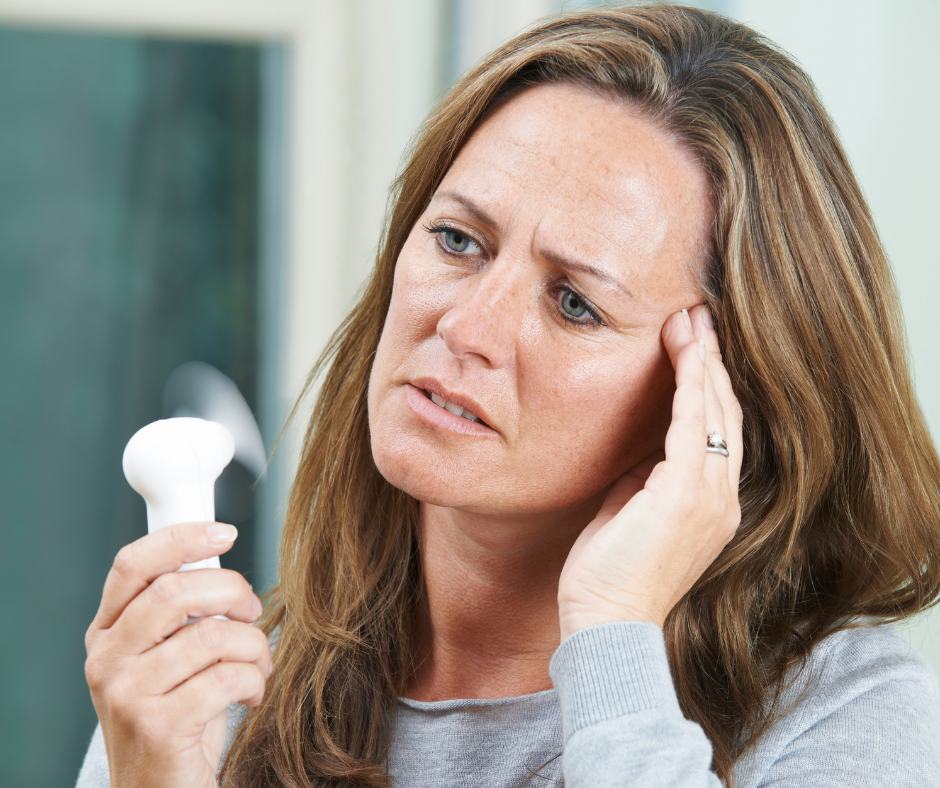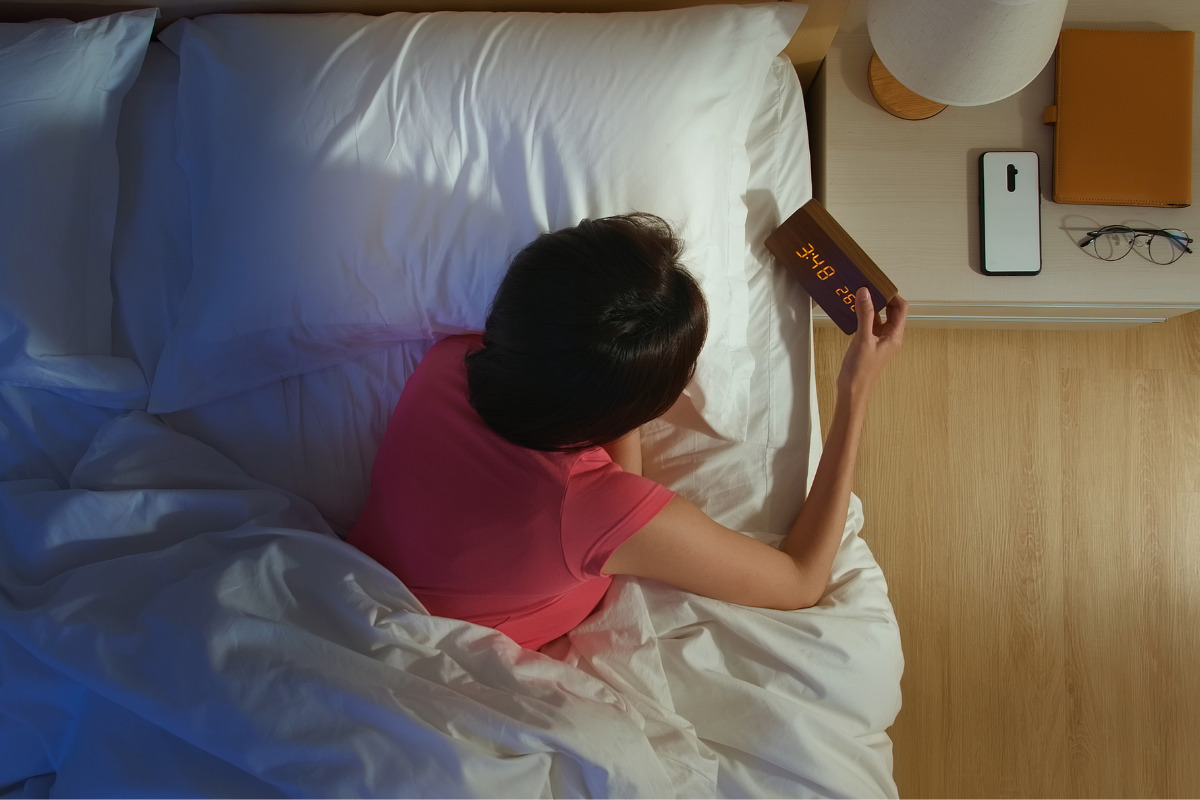Common Hot Flash Triggers

Do you remember your first hot flash? Many women do because the sensation of uncomfortable heat spontaneously rising through your body and “flushing,” turning bright red in your chest, neck, and face, even sweating, is one that women typically haven’t experienced before. While some women have hot flashes and night sweats during pregnancy, most women will experience this common menopause symptom for the first time in their 40’s during perimenopause. Often, it’s one of the first signs that the menopause transition is underway.
Eighty percent of women will have hot flashes during the menopause transition, which get more frequent and intense from the early to late perimenopausal stages. They typically last four to seven years, but some women experience them for ten or more years. That’s a long time to peel your clothes on and off and stand in front of the freezer seeking relief!
There are hormonal, non-hormonal, and holistic options for relieving hot flashes. However, many women prefer to manage hot flashes without the aid of menopausal hormone therapy or other prescription therapies, preferring holistic remedies. Whatever approach you take, a good first step is to identify and track your hot flash triggers. In fact, your doctor may ask you about your triggers or ask you to keep a diary for several months before prescribing a course of treatment.
Several obvious and not-so-obvious factors can trigger hot flashes and make them more frequent and intense. This article discusses the most common hot flash triggers, how to pinpoint your triggers, and quick tips for relief.
Tracking Your Triggers
Hot flashes often make women feel they have no control over their bodies. The first step to regain control is to create a hot flash diary. This is a simple exercise where you track your hot flashes for a week or two. Spending just a few minutes each day will help give you insight into factors that may be triggering or making your hot flashes more severe. Follow these easy steps to get started. A piece of paper and a pencil is all that’s required, or you can download Midday and, with a few quick taps, easily record your hot flashes and triggers and get personalized insights and therapeutic support.
Day-Time Hot Flash Entries
- Note down the time of each hot flash occurrence.
- Rate how intense it was on a scale of 1-5, with 1=barely noticeable and 5=extremely severe.
- Look at the list of triggers and write down any that may have applied in the last 90 minutes, like drinking a hot beverage or eating spicy food.
- Make a note of your mood that day. Were you stressed? Anxious? Nervous?
Recording Hot Flashes During Sleep
- For hot flashes during sleep, make a diary entry in the morning shortly after waking when your memory is strongest. Estimate the number of times you had hot flashes during sleep.
- If any hot flashes woke you up, estimate the amount of time spent awake.
- Look at the list of triggers and note any that may have caused you to hot flash during sleep, like drinking red wine in the evening or feeling anxious.

Common Hot Flash Triggers
There are four primary categories of hot flash triggers – food and beverages, environment, lifestyle, and emotions. Some factors are well-known and studied by researchers, while others are not as well understood. In your diary, write down the triggers that apply to you. When you have a hot flash, review the list and note any of the triggers you think may have sparked the hot flash.
Food & Beverages
- Caffeine – Reduce caffeine consumption by avoiding energy drinks, caffeinated sodas, and coffee. Switch to green and herbal teas for less caffeine.
- Red Wine & Other Alcoholic Beverages – All alcoholic beverages cause some vasodilation or expansion of blood vessels, making you feel warmer. Experiment with white wine or dilute your red wine with sparkling water. Try a mocktail instead, like club soda with a splash of bitters and a twist of lime.
- Hot Beverage – Stay cool by switching to iced, decaffeinated versions of your favorite hot beverages.
- Spicy Food – Like alcoholic beverages, spicy food causes vasodilation of the blood vessels, triggering hot flashes. Try eliminating spicy foods from your diet, especially dishes prepared with hot peppers and chili powders.
- Hot Food – Hot foods like soup and stews may trigger hot flashes. Focus on cold or room-temperature foods, especially on a hot day.
- Heavy Meal – Eating a big meal or one with heavy foods that take longer to digest may cause more hot flash activity, especially if the meal was consumed in the evening before sleep. Eat smaller easy-to-digest meals.
- Sugar – High blood sugar, insulin resistance, and metabolic syndrome have been linked to a higher incidence of hot flashes in menopausal women. Switching to a plant-based diet low in sugar can help with hot flashes and weight gain.
- Chocolate – Consuming chocolate can cause a spike in blood sugar and trigger a hot flash. See if switching to extra dark 85% cacao or higher in a very small amount helps.
Environment
- Warm Room – Lower the temperature to keep your house cool. Sleep in a room that is cooler than 67 degrees Fahrenheit. Open a window or use a small portable fan for a cooling breeze.
- Hot Weather – If hot weather is unavoidable, dress in light, breathable clothing, wear a hat, and keep an ice-cold bottle of water at hand.

Lifestyle
- Smoking – One of the most well-researched hot flash triggers is smoking. Quitting is hard, we know. Check out smokefree.gov for 16 options to help you quit. There is sure to be one that works for you.
- Exercise – Exercise can trigger hot flashes, but some evidence indicates that exercise can reduce hot flashes. With so many health benefits to exercise, it makes sense to keep up your routine and use proven strategies to learn how to cope with exercise-induced hot flashes.
- Tight Fitting Clothes – Wear loose, comfortable clothing made of cotton to help absorb perspiration.
- Heavy Clothes – Dress in light layers so that you can remove some clothing if you suddenly feel hot. Think tee shirts with lightweight cardigans and a chic pashmina scarf. Dresses, skirts, and loose pants are good choices too.
- Hair Appliances – Besides heating up your body and triggering a hot flash, blow dryers and curling, and flat irons can damage aging hair. Try air drying your hair or adopting a bold new easy-to-care-for style.
Emotions
When we have intense or stressful emotions, the blood rushes to the skin’s surface, triggering a hot flash. A few of the emotions that cause hot flashes include:
- Stress
- Anxiety
- Anger
- Nervousness
Mindfulness techniques like deep breathing, meditation, and yoga are good options for managing emotions that may be triggering hot flashes. Lisa Health’s guide to mindfulness for menopause explains how to put these techniques into practice.
Stay Cool
While hot flashes are still being researched and understood, there is much to be gained from recording and analyzing your own hot flash patterns. By understanding your unique hot flash activity, you can systematically eliminate triggers and see how your body responds. Studies show that when women understand and manage their triggers, they see symptom improvement, feel a restored sense of control over their bodies and report better quality of life.
About ten to twenty percent of women experience severe hot flashes that don’t respond well to self-management. If that’s you, don’t suffer needlessly. Share your diary with a clinician trained in menopausal care and discuss your options for relief. Your clinician will appreciate having the data your diary provides and can make data-driven recommendations for hot flash management. If you need help finding an expert in menopausal care, the North American Menopause Society has a handy, searchable database of certified menopause practitioners.
To learn more about hot flashes and management options, download Midday and check out our comprehensive guide written by a leading hot flash researcher and expert, Dr. Nanette Santoro.
Suffering from hot flashes is no fun, making it worthwhile to make small lifestyle adjustments to get relief. Download Midday from the App Store or visit us at Midday.Health. With help from Midday and a little perseverance, you can gain control over this annoying symptom. We hope you’ll join us!
Sign up for more unique women’s health content
By submitting this form, you agree to the Lisa Health Privacy Policy and Terms of Use


